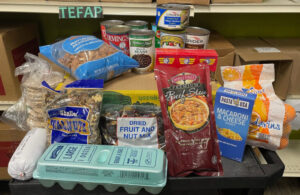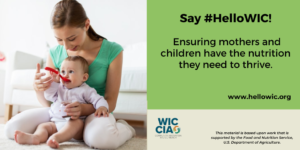This summer, the government has taken steps to make it easier than ever for kids to participate in summer meals. At the same time, closures of libraries, summer camps and community centers because of the coronavirus have created additional challenges in finding places to distribute the meals.
Food banks are rising to the challenge by working closely with school districts and community organizations to identify the need, establishing relationships with nonconventional partners, getting the word out about summer meals in novel ways, and taking advantage of technology like mapping software and texting.
“It’s a weird time,” said Jennifer DeWitt, Vice President of Community Initiatives at Lowcountry Food Bank in Charleston, SC. “We’re all trying to do everything we can to feed those we can.”

This year, Lowcountry is distributing food through 16 summer meal sites compared to 39 it had last year. It is being strategic in its placements, making sure not to overlap the ongoing efforts of school districts that are continuing to run their pandemic-related meal services. “We’re not used to having schools open during the summer serving meals, so we want to support those efforts, not duplicate them,” DeWitt said.
To that end, Lowcountry took advantage of an existing relationship with the College of Charleston to apply mapping software to its ten-county distribution area. It mapped the locations of its agencies and mobile distributions against existing school meal sites — taking into account the number of SNAP recipients in each community — to identify gaps in service. In one area with only one agency but large potential need, the food bank worked with the county school system to set up mobile distributions at various elementary schools.
DeWitt noted that each of the school districts approached summer meals differently, with some serving every day of the week, others serving one day a week and some not at all. “It was important for us to have the right information and figure out the gaps,” DeWitt said.
Similarly, Feeding San Diego knew early on that working with school districts would be an important key to its summer meal program. “The niche the food bank serves is filling the need where the school districts cannot,” said Dana Henderson, Program Manager at Feeding San Diego.
As of mid-July, Feeding San Diego was delivering summer meals through 11 sites, down from 23 sites in 2019, and it was working on adding another 26 sites. Although it has been distributing through fewer sites, the number of meals has increased by more than 200%, compared to before the pandemic and last summer, Henderson noted.

The food bank has had success in leveraging partnerships in the community, such as with libraries, apartment complexes and the YMCA, to add new sites. For example, it is working with libraries in rural communities where schools don’t have the capacity to support summer meals. And through the Armed Services YMCA, it is providing meals to military families.
Word of mouth has helped Feeding San Diego establish meal sites in a small but highly diverse community that is home to numerous resettled populations. Despite 80 different dialects being spoken in the area, word got around quickly about the first meal site Feeding San Diego established there, and soon it was supporting five sites. “Word of mouth can be a powerful tool,” Henderson noted.
In northern California, the Second Harvest of Silicon Valley is working to think of new ways to advertise its summer meal programs. Tracy Weatherby, Vice President of Strategy & Advocacy at Silicon Valley, explained that the food bank changed its promotional method from advertisements on Spanish-language radio stations to Spanish-language television channels, as people are spending much less time in their cars.
Another way Silicon Valley has adapted its summer meals program is through updated mobile services and home delivery operations. Although there is a readily available national texting service for summer meals, the food bank created its own in order to have better control of its information. Through the app, customers can access a map that directs them to summer meals close by.

Like other food banks, Silicon Valley has moved to grab-and-go meals post-pandemic to accommodate social distancing. Previously, summer meal programs consisted of more social activities such as picnics, games, and food trucks.
Despite all of these challenges, there are reasons to be optimistic about participation in summer meals. Various waivers issued by the government have made the summer meals program more viable than ever. Now, for example, guardians can pick up multiple meals at once, and do so without a child present. Meals can also be served in areas that would not normally be eligible. “Summer meals programs have never been more important,” Weatherby said.
The USDA is now offering Pandemic-EBT, similar to the Summer-EBT which had previously been piloted in only eight states. Crystal Fitzsimmons, the Director of School and Out-of-School Time Programs for the Food Research & Action Center, said, “The P-EBT program provides an EBT card with the value of free school breakfast and lunch to families whose children were certified for free or reduced price meals. So, it works out to be about $5.70 for breakfast and lunch, per child.” EBT programs have been a proven way to help reduce food insecurity, according to Fitzsimmons.
Although there is currently no data to confirm that more children are being fed through this year’s summer meals programs, “it would be very concerning if we serve the same number of kids this year as we did last year,” said Fitzsimmons. While school districts will have varied plans for the coming school year, P-EBT will continue to be critical. — Odeya Rosenband
Odeya Rosenband is a freelance writer and essayist at Cornell University studying government and creative writing. She is a columnist and staff writer at The Cornell Daily Sun.
Like what you’re reading?
Support Food Bank News








